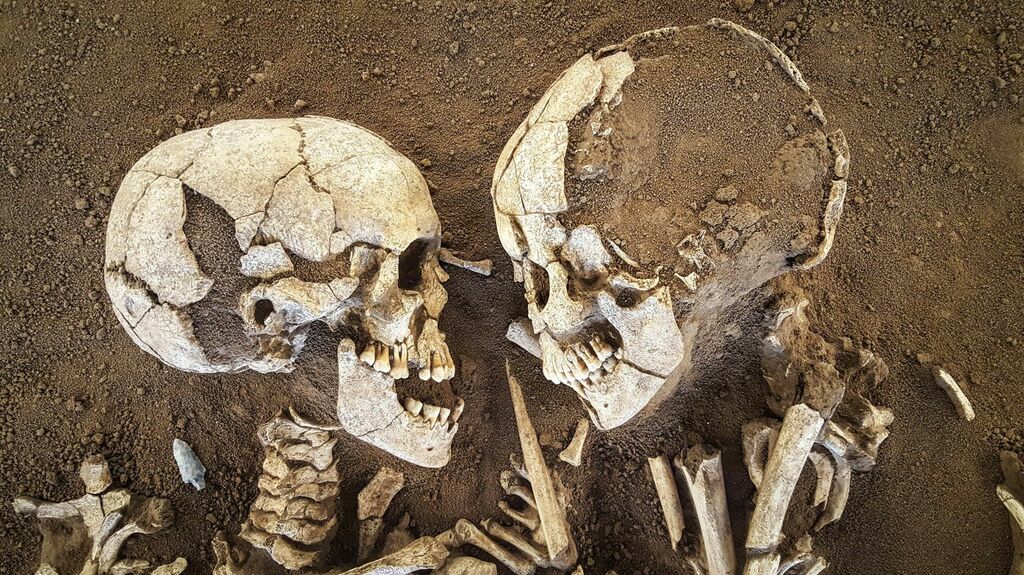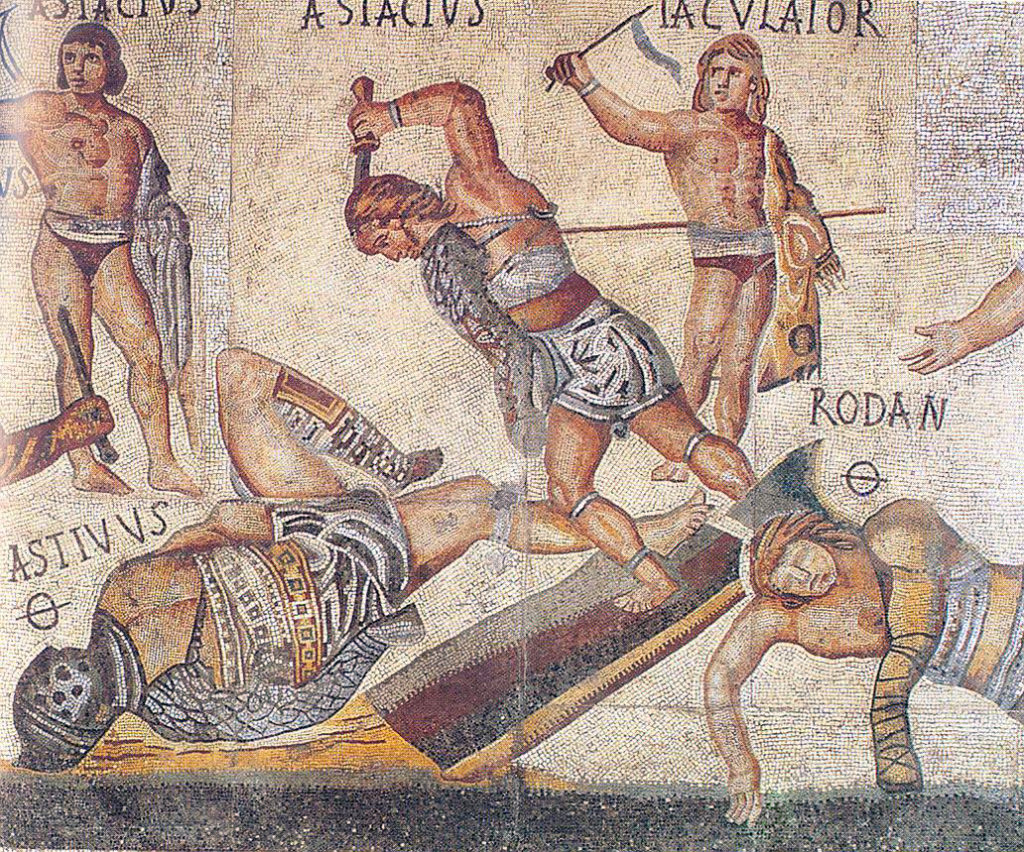Saturnalia was an ancient Roman festival honoring the god Saturn.
The holiday started with a single day. It eventually stretched to a full week of celebrations. Slaves were given time off of work and gifts were exchanged.
Saturnalia was celebrated in December. Many of its traditional practices influenced Christmastime festivities throughout Europe.

Saturn Himself
Saturn was one of the most important Gods of ancient Rome. He married his sister, Ops. Together they created other important gods such as Jupiter, Neptune, Pluto, and Juno.
As one of the most powerful gods, Saturn ruled over any number of things, such as agriculture, liberation, wealth, and time itself.
The god Saturn may have been partially based on the semi-mythical king Saturnus. He ruled in pre-Roman times.
Centuries later Justinus wrote that he was:
“said to have been a man of such extraordinary justice, that no one was a slave in his reign, or had any private property, but all things were common to all, and undivided, as one estate for the use of every one; in memory of which way of life, it has been ordered that at the Saturnalia slaves should everywhere sit down with their masters at the entertainments, the rank of all being made equal.”
– Justinus
Like other Roman gods, Saturn borrowed much of his mythology from ancient Greece. His counterpart was the Titan Cronus. Whereas Cronus was overthrown and replaced by Zeus, Saturn maintained an important place in ancient Roman religious practices.
Saturn was a particularly important deity in Rome, where worshippers continued ancient Greek practices of making ritual sacrifices to the god.
His influence endures in the name of the planet Saturn. Also, Saturday, which was called Saturni dies or “Saturn’s day” by ancient Romans, and kronou hēmera or “the day of Cronus” by ancient Greeks.
The Origins of Saturnalia
Before Rome came to power, the ancient Greeks celebrated the Athenian festival of Kronia. This was often regarded as the origin of the Roman holiday Saturnalia. This summer holiday honored the god Cronus (also written as Kronos) and was celebrated with feasting.
On this day, all classes were more or less equal. This was a longstanding tradition across cultures. Masters and slaves dined together on a certain feast day such as this. Examples include the Spartan holiday of Hyacinthia and the Cretan festival of Hermaia.
In many places, societal roles were reversed for the day. Masters would wait upon their servants. This celebrated a mythical golden age in which no man was enslaved and there was plenty of food for all.
An Ancient Roman Holiday
Ancient Romans celebrated Saturnalia on December 17th. The festivities eventually expanded to encompass a full week, running through the 23rd. Saturnalia was a holiday from all work. Schools and courts were closed.
A King of Saturnalia was elected to preside over the festivities. He could give commands, demanding that people entertain and delight the crowd. This custom endured throughout Europe for centuries after the fall of Rome in the form of a Lord of Misrule who was elected at Christmas time.
In 217 BC, following a crushing defeat by their enemies in Carthage, aspects of the ancient Greecian festival Kronia were incorporated into Saturnalia festivities. These old customs included ritual sacrifice, a public banquet, and shouts of io Saturnalia.
Waiting upon slaves, many of whom were brought back from the recent war, may have been done to appease the Carthaginian god Ba’al Hammon.
The celebration traditionally began with a ritual sacrifice at the Temple of Saturn. The temple had occupied its current spot in the Roman Forum since 497 BC. This made it one of the oldest Roman temples.
In the third century BC, Saturnalia was celebrated in part with ten days of gladiatorial combat. The dead gladiators were offered up to the god Saturn. This was the start of the infamous gladiatorial games that continued for centuries.
As time went on, Saturnalia became a festival of light. Occurring on or around the winter solstice, this holiday came to represent the renewal of the light. The many flames lit on this day also represented truth and knowledge.
Saturnalia Celebrations
Many Roman holidays were unique to certain places, but Saturnalia was a grand holiday celebrated throughout the empire. Following the public festivities, families continued to celebrate at home and in the streets.
Wealthy families sacrificed suckling pigs. This sacrifice was followed by feasts and gift-giving. As with Kronia, it was common for masters to wait upon their slaves, who were provided with sumptuous feasts.

Drunkenness was the norm. Some more somber and studious citizens such as Pliny the Younger retreated for the duration. “This way,” he explained, “I don’t hamper the games of my people and they don’t hinder my work or studies.”
Many people dressed in costumes. The most popular were colorful robes that were popular in ancient Greece, called synthesis (the word means “put together”). These robes were simpler than togas and only worn in public during Saturnalia.
Gambling, which was sometimes illegal and generally looked down upon, was permissible on Saturnalia. Slaves were permitted to play games with freemen.
The final day of Saturnalia, December 23rd, was celebrated with a day called Sigillaria. This name was also used for the figures made of wax or pottery that were traditionally given on that day. Generally, these figures represented various gods and goddesses.
All sorts of other gifts were given on this day as well. Many employers gave out Saturnalia bonuses in advance to help their employees afford gifts. Children were given toys.
Pope Julius I (337–352) is believed to have set December 25th as the day of Christ’s birth in an effort to convert Romans who still celebrated Saturnalia. That date was also the traditional birthday of the Roman Sun God, a secondary tradition that the church sought to overtake.
Throughout the Middle Ages, Christmas was a long and rowdy holiday very similar to Saturnalia. The lighting of advent candles mirrors the Roman practices surrounding torches and wax tapers.
Long-established traditions of singing, feasting, and gift-giving endure to this day.

